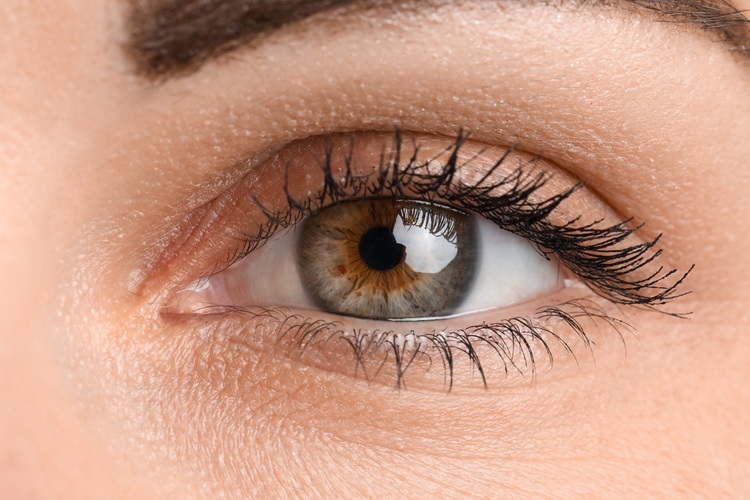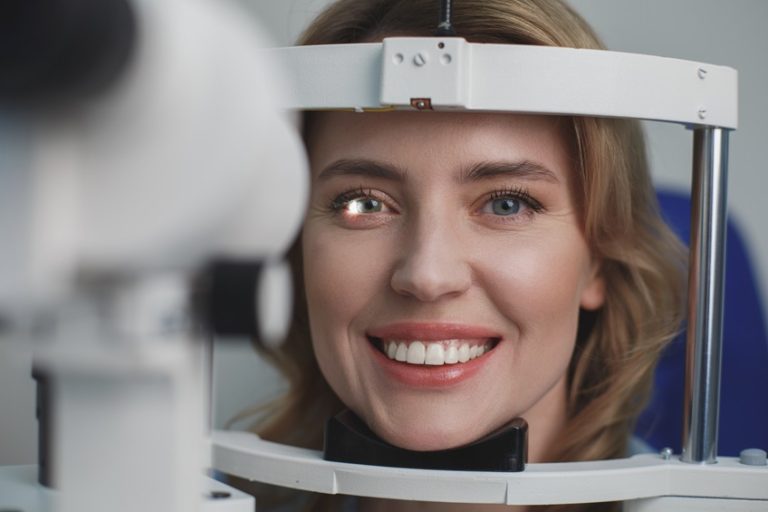Sincere eye care by professionals
25 SURGEONS
10
CLINICS
SINCE
2003
300 000+
CUSTOMERS
10 YEARS WARRANTY
QUALITY
SERVICES
REVIEWS ABOUT THE CLINIC
Choose an eye correction method by age
Your age 18–45

Laser Eye Surgery
Myopia, hyperopia, and astigmatism can be corrected. Forget about glasses and contact lenses.
Your age 45+

PRESBYOND® laser eye surgery or lens replacement (RLE)
Laser correction using the PRESBYOND® method or lens replacement addresses the problem of presbyopia (age-related farsightedness). The patient may be able to give up glasses completely, or their need for them is significantly reduced.
Eye Correction for Age 45+
WHAT IS AN AGE-RELATED FARSIGHTEDNESS CORRECTION?
For patients over 45 who seek surgical vision correction, the most commonly recommended procedures are laser eye surgery for presbyopia (age-related farsightedness) or refractive lens exchange (RLE).
Due to constant physiological changes within the eye’s lens, it gradually loses its elasticity over time. As a result, accommodation – the ability to clearly see fine details up close – weakens. This process occurs slowly, so we may not notice our vision declining for a while. The nearest point of clear vision gradually shifts farther from the eye. Around the age of 40–45, it has moved so far that a person can no longer read, write, or perform other fine tasks at a normal distance.
This age-related physiological weakening of the lens’s accommodation is called presbyopia (from the Greek présbus – older person + õps – eye), also known as age-related farsightedness.

SYMPTOMS OF PRESBYOPIA
- Distance vision often remains unchanged.
- Near vision gradually worsens.
- Difficulty reading or doing fine tasks at close range.
LASER EYE SURGERY OF PRESBYOPIA: PRESBYOND®
PRESBYOND® is an advanced laser technique addressing presbyopia. After surgery, patients may no longer need glasses or may need them far less. The method is recommended when:
- The patient is over 45.
- Nearsightedness is not worse than -8 diopters, farsightedness is no more than +2 diopters, and astigmatism ≤ 2 diopters.
- The cornea has sufficient thickness.
- No other eye condition that affects vision is present.


SAFE REFRACTIVE LENS SURGERY
Presbyopia (age-related farsightedness) affects everyone without exception. By replacing the lens, vision and quality of life improve. The earlier a patient consults a doctor, the quicker and better the postoperative results can be expected.
- This surgery is a painless procedure performed under local anaesthesia.
- Through a micro-incision of just over 2 mm in the cornea, the natural lens is emulsified and removed with a special device. A new artificial lens is implanted into the lens capsule.
- The operation is quick – usually lasting 20–30 minutes.
- Vision improves within the first few days after surgery and stabilizes completely over the following weeks.
AVAILABLE EYE CORRECTION METHODS
- The patient’s expectations and lifestyle are discussed.
- Comprehensive eye examinations are performed.
- The most suitable correction method is recommended.
- Price for both eyes.
- For patients aged 18–55.
- Performed using SURFACE, FS-LASIK, or SMILE PRO methods.
- Quick, effective, painless.
- After the age of 45, reading glasses are usually required.
- Price for both eyes.
- For patients aged 45+.
- Age-related farsightedness correction using the PRESBYOND® laser method.
- Quick, effective, painless.
- Glasses are no longer needed, or the need for them is minimal.
- Price for both eyes
- For patients aged 45+
- Lens surgery with monofocal aspheric or astigmatism-correcting lenses
- Quick, effective, painless
- Reading glasses are still required
- Price for both eyes
- For patients aged 45+
- Lens surgery with multifocal or extended depth-of-focus (EDoF) lenses
- Quick, effective, painless
- Glasses are no longer needed, or the need for them is minimal
COMPARISON OF CORRECTION METHODS
Our specialist will recommend the eye surgery method after examining your eyes and applying their expertise. You will then choose the option that is most acceptable to you.
Frequently asked questions
What is presbyopia (age-related farsightedness)?
Due to natural ageing processes, the anatomical lens in the eye gradually loses its elasticity, and the eye’s accommodative function weakens – the ability to see clearly at all distances. While distance vision remains unchanged, accommodation decreases, and we begin to see poorly up close. When reading or doing detailed close-up work, one tends to move the object farther away; the image becomes clearer as it is distanced from the eyes. Around the age of 40–45, the nearest clear vision point has receded so much that it becomes difficult to read, write, or perform fine tasks at a normal distance.
What are the main symptoms of presbyopia?
Distance vision usually remains unchanged, but near vision gradually worsens, making it difficult to read or perform fine tasks at close range.
Is presbyopia a disease?
No, it is not a disease. It is a natural physiological process in which the lens loses elasticity and can no longer change its curvature. As a result, the eye fails to focus on nearby small objects – the image becomes blurred and unclear.
Can presbyopia be stopped or prevented?
Unfortunately, no. It is an inevitable part of age-related changes. However, it can be effectively corrected with various methods – glasses, contact lenses, laser presbyopia correction with the PRESBYOND® method, or refractive lens exchange surgery.
What is the difference between PRESBYOND® laser eye surgery and usual laser correction?
The procedures are technically very similar, but they differ in who they are suitable for and the results achieved. PRESBYOND® method is explicitly designed for patients with presbyopia and restores functional vision at all distances.
Can I undergo usual laser eye surgery if I already have presbyopia symptoms?
Yes, if you are otherwise eligible. Usual laser eye surgery (SURFACE, LASEK, NO CUT, FS-LASIK, SMILE PRO) restores good distance vision without glasses, but presbyopia symptoms will remain, meaning reading glasses may still be needed. For complete correction at all distances, PRESBYOND® hyperlink or lens replacement is more suitable.
Which method is most suitable for me?
The most appropriate correction method will be recommended by the specialist after a thorough eye examination.
When should I consider PRESBYOND® eye surgery or refractive lens surgery (RLE)?
If glasses or contact lenses become inconvenient, reduce your quality of life, or you want a long-term, comfortable solution.
Can presbyopia correction also address other vision problems (e.g. myopia, astigmatism)?
Yes. Modern techniques allow simultaneous correction of several refractive errors, improving vision at all distances.
How long does recovery take after presbyopia correction?
It depends on the chosen procedure. Most patients return to daily activities within a few days to weeks.